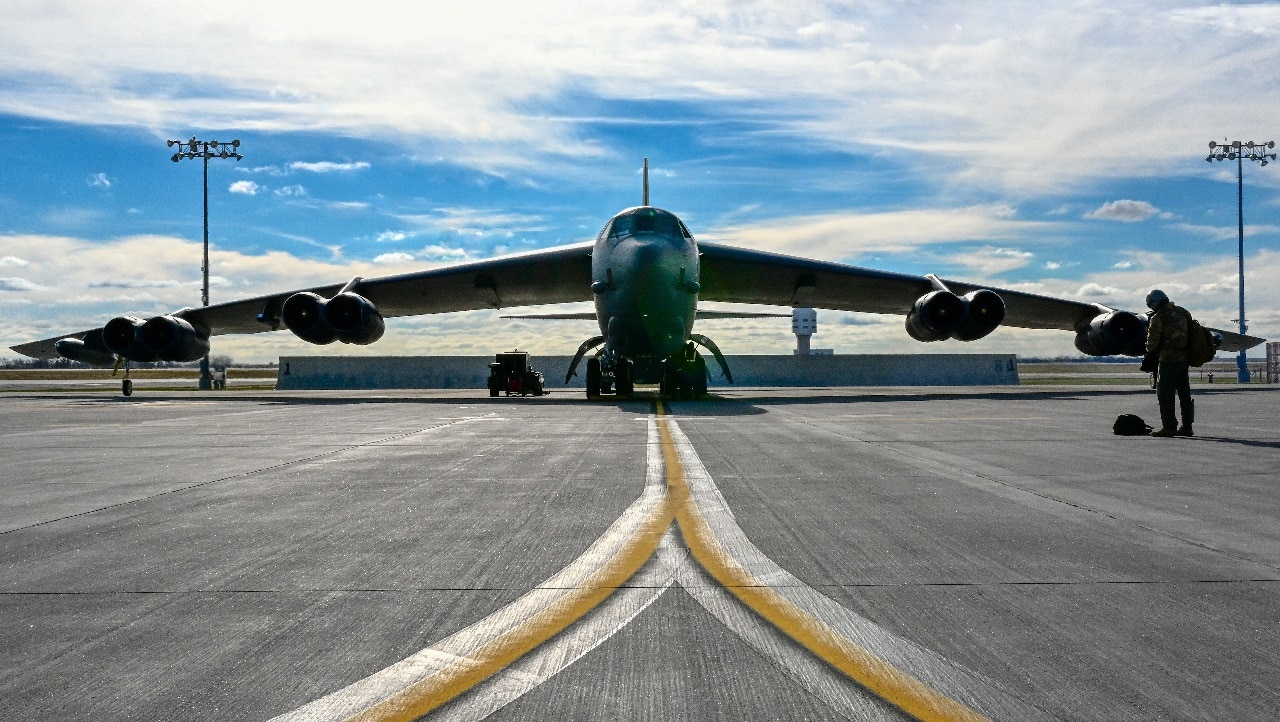Progress on upgrading the B-52 Stratofortress is no longer slow rolling. This week, Raytheon delivered its first Active Electronically Scanned Array (AESA) radar system for the bombers and Rolls Royce revealed that it is on track to complete its initial F130 engine testing.
Since the B-52 platform is more than sixty years old, the Air Force is working hard to upgrade its existing fleet in order to retain an edge over competitors. The bomber is expected to undergo a series of enhancements to its engine, radar, communication and navigation system and more.
This whopping $11 billion dollar makeover will give the Stratofortress the capabilities to become an airborne electronic attack platform.
These alterations coincide with increased tensions between Washington and Beijing and as the PRC further develops its own H-20 bomber program.
A brief history of the B-52
The long-range, subsonic, jet-powered strategic bomber was conceptualized more than seven decades ago. In the mid-1940’s, Air Material Command expressed the need for a new bomber capable of carrying out mission sets without having to rely on advanced and intermediate bases in other countries. Within a decade, the first B-52A iteration took to the skies, followed closely by the subsequent B variant one year later. All in all, 744 B-52s were produced with the latest model being a B-52H which was delivered in the early 1960’s. An additional dozen were constructed but ultimately sent to the “Boneyard” for early retirement.
As the Air Force’s principal strategic nuclear and conventional weapons platform, the Stratofortress can certainly pack a punch when it comes to ordnance. In fact, equipped with a weapons payload of more than 70,000 pounds, this bomber is capable of carrying the widest array of weapons of all other airframes. As detailed by Airforce Technology, “The nuclear weapons capacity includes 12 AGM-129 advanced cruise missiles (ACMS), 20 AGM-86A air-launched cruise missiles (ALCM) and eight bombs.” Additionally, its conventional weapons payload includes “eight AGM-84 Harpoon missiles, four AGM-142 Raptor missiles, 51,500lb bombs, 301,000lb bombs, 20 AGM-86C conventional air-launched cruise missiles (CALCM), 12 joint stand-off weapons (JSOW), 12 joint direct-attack munitions (JDAM) and 16 wind-corrected munitions dispenser (WCMD).”
An improved EWS could prolong the B-52’s service life
Currently, the B-52s are fitted with the older radar known as the ALR-20A radar warning system. The USAF has used this system since the 1960’s, rendering it quite antiquated in terms of newer technologies. Although the service has enhanced the Stratofortress’ electronic countermeasure capabilities over the years with several facelifts, AESA radar technology is definitely a step up. The system enables military aircraft to perform air-to-ground and air-to-air surveillance and targeting tasks vis-à-vis near speed of light beam steering.
The Air Force is hopeful that its 71-year-old strategic bomber fleet can be repurposed for future combat missions. Next year, the B-52s will be tested using ALQ-249 jamming pods, which is the first of three systems being developed currently by the Navy for its fleet of EA/-18G Growler jets. While the Navy’s ALQ-249 equipped airframes can support strike groups, an ALQ-249 equipped B-52 fleet could provide additional electronic warfare cover for “high-value airborne assets,” according to Aviation Week.
Maya Carlin, a Senior Editor for 19FortyFive, is an analyst with the Center for Security Policy and a former Anna Sobol Levy Fellow at IDC Herzliya in Israel. She has by-lines in many publications, including The National Interest, Jerusalem Post, and Times of Israel. You can follow her on Twitter: @MayaCarlin.

